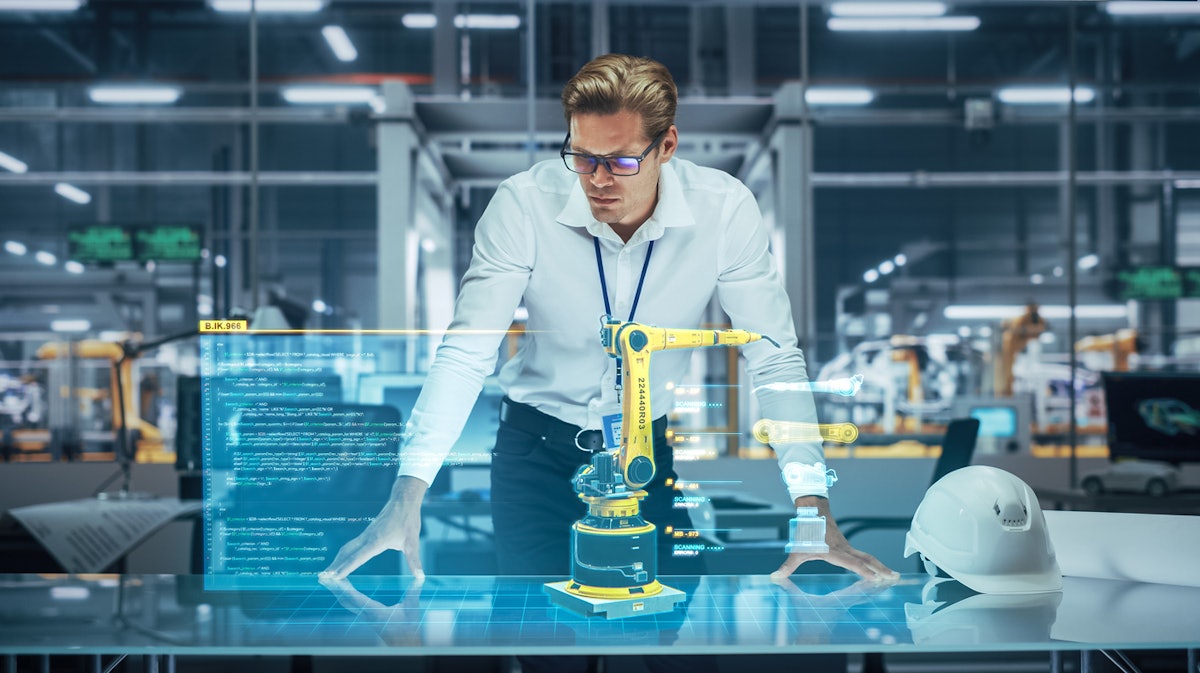Emerging technologies, such as augmented reality, are set to transform operations in the manufacturing and logistics sectors. Matthew Wyatt, the vice president of professional services at TeamViewer, shares three predictions on how augmented reality will influence these industries in 2025.
Most Read on Manufacturing.net
- WATCH: Famed Workwear Maker Moving from Texas to California
- Econo-Pak Announces Major Co-Packing Facility Expansion
- WATCH: Cargill to Cut 8,000 Jobs
- WATCH: Electric Bus Co. Suspends Production at Brand New Plant
1. Logistics operations will embrace purpose-built wearable technology
The logistics industry will move beyond traditional mobile devices to adopt purpose-built wearable solutions that better suit the needs of warehouse workers. This shift will be driven by the realization that process improvement alone, using existing mobile technology, has reached its peak benefit.
Augmented reality devices will offer hands-free operation and contextual information delivery specifically tailored for warehouse environments. These solutions will range from smart glasses for pick-and-pack operations to lightweight wearables for all logistics operations.
Organizations should begin evaluating wearable platforms and software solutions that can accommodate a diverse workforce while maintaining flexibility for different use cases.
Focus on solutions that prioritize worker comfort and preference, allowing for optional adoption rather than mandatory deployment.
2. Frontline workers will drive enterprise technology adoption
In 2025, there will be a fundamental shift in enterprise technology deployment, as organizations recognize the critical value of gathering perspectives from frontline workers directly. Rather than following traditional top-down technology mandates, organizations will prioritize the insights and preferences of workers on the ground.
This revolution in technology adoption will be particularly evident in manufacturing and logistics, where the practical expertise of hands-on workers will take precedence over executive assumptions.
Organizations should establish formal feedback mechanisms that elevate frontline worker voices in technology decisions. Focus on technologies that workers identify as making their jobs more enjoyable and efficient, rather than those that simply promise operational improvements on paper.
This collaborative approach will result in more successful technology implementations and higher ROI through improved worker satisfaction and adoption rates.
3. Equipment failures are predicted and prevented before they happen
As physical and digital worlds converge, the integration of AI and AR will revolutionize troubleshooting and remote diagnostics. The massive amount of data generated in logistics operations will fuel sophisticated AI systems that optimize warehouse execution and inventory management.
By overlaying real-time data, instructions and virtual guidance directly onto a user’s field of view, AR empowers onsite technicians to collaborate seamlessly with remote experts.
This creates a world where equipment failures are predicted and prevented before they even happen, and when issues do arise, AI-guided AR overlays will make complex repairs as intuitive as following a simple recipe. Remote experts will be able to see through the eyes of on-site technicians and manipulate AR annotations in real-time, while AI systems analyze problems and suggest solutions with unprecedented accuracy.
This convergence of AR and AI-powered predictive intelligence will streamline problem-solving and reduce downtime significantly. Companies should focus on building a strong data foundation and ensuring cloud infrastructure is in place to support AI implementations.
As these AI and AR capabilities mature, organizations will be able to empower their workforce with increasingly sophisticated remote diagnostic tools, bridging the gap between physical and virtual experiences.
Click here to subscribe to our daily newsletter featuring breaking manufacturing industry news.

